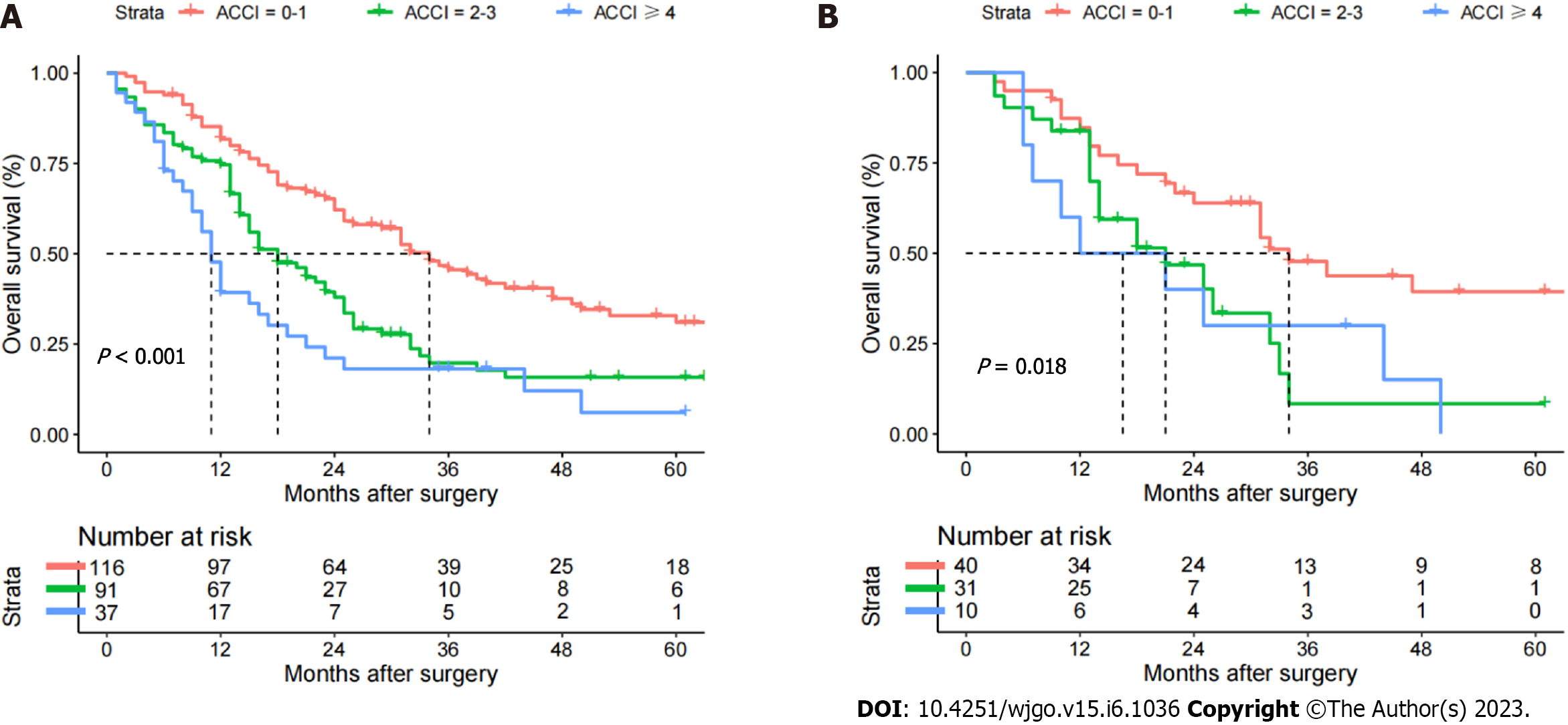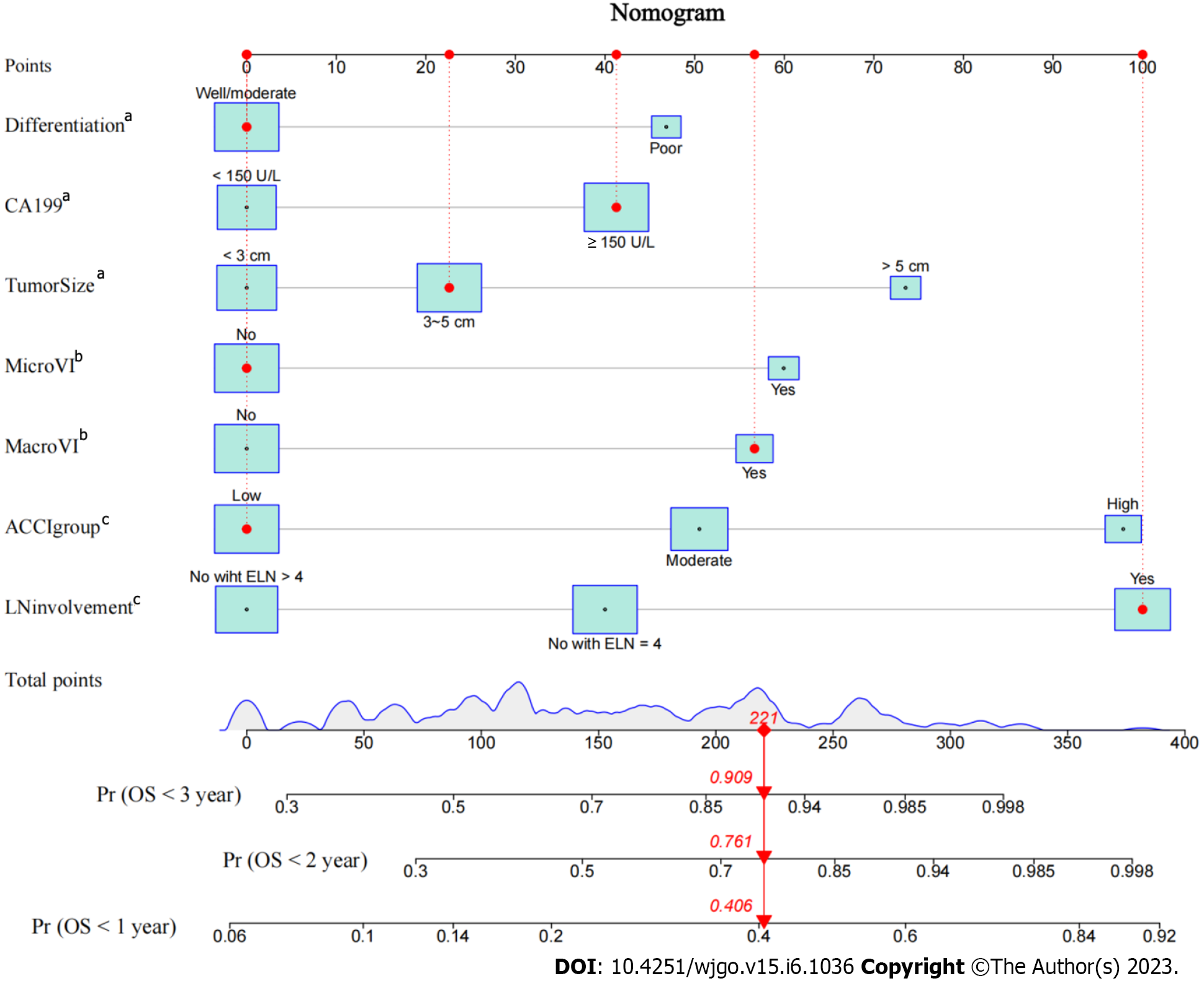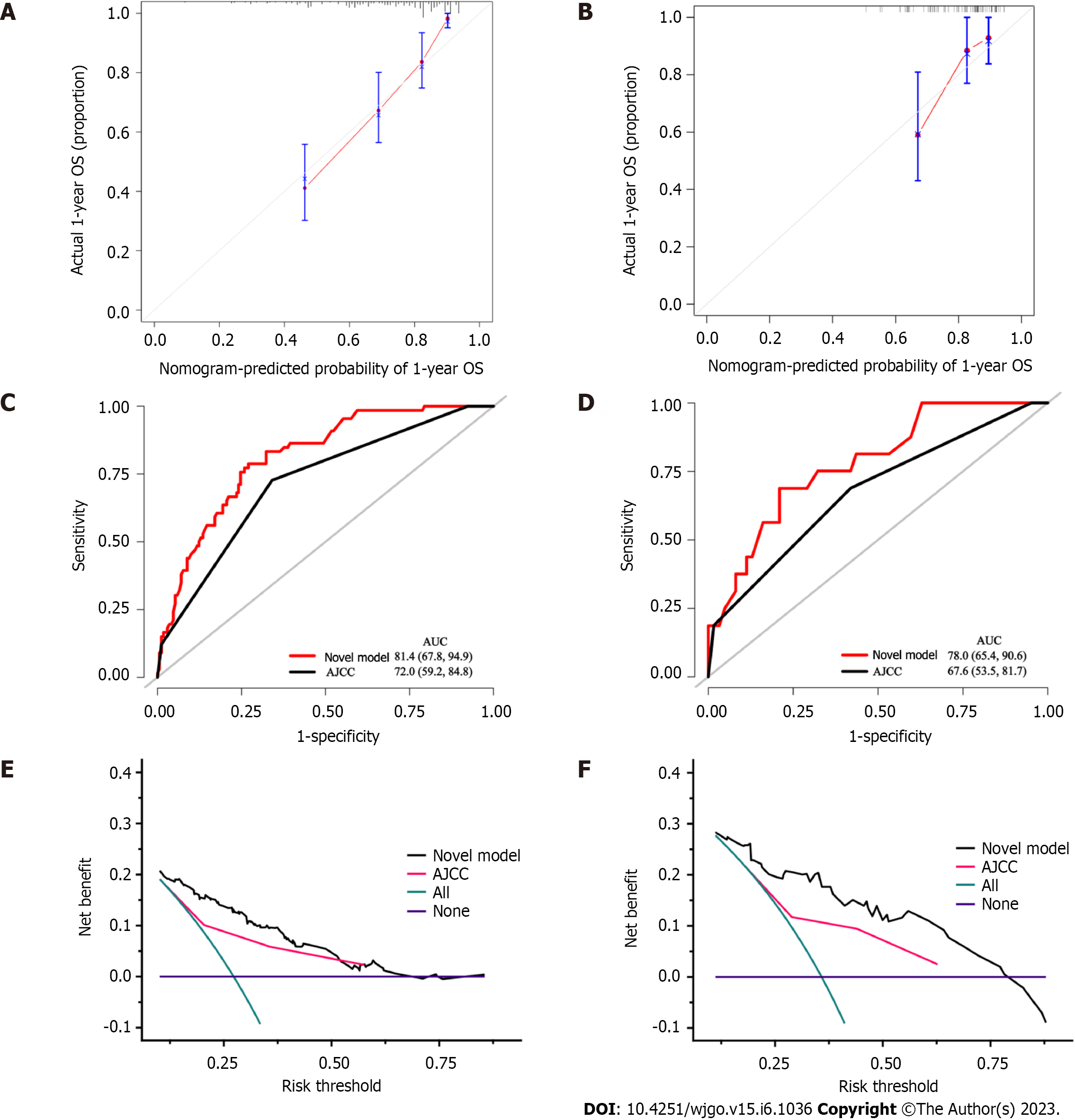Copyright
©The Author(s) 2023.
World J Gastrointest Oncol. Jun 15, 2023; 15(6): 1036-1050
Published online Jun 15, 2023. doi: 10.4251/wjgo.v15.i6.1036
Published online Jun 15, 2023. doi: 10.4251/wjgo.v15.i6.1036
Figure 1 Overall survival of perihilar cholangiocarcinoma patients in the training and validation cohorts according to the three age-adjusted Charlson comorbidity index groups.
Low age-adjusted Charlson comorbidity index (ACCI): 0-1; moderate ACCI: 2-3; high ACCI: ≥ 4. A: Training; B: Validation cohorts. ACCI: Age-adjusted Charlson comorbidity index.
Figure 2 Age-adjusted Charlson comorbidity index-based enhanced regression nomogram to predict the overall survival of perihilar cholangiocarcinoma patients.
ACCI: Age-adjusted Charlson comorbidity index; OS: Overall survival. aP < 0.05, bP < 0.01, cP < 0.001.
Figure 3 Calibration curves, receiver operating characteristic curves and decision curve.
A and B: Calibration curves for predicting 1-yr overall survival in the training (A) and validation cohorts (B); C-F: Receiver operating characteristic curves (C and D) and decision curve analysis (E and F) for the prognostic model and 8th American Joint Committee on Cancer staging system in the training (C and E) and validation cohorts (D and F). AJCC: American Joint Committee on Cancer; AUC: Area under the curve; OS: Overall survival.
Figure 4 Risk classifications satisfactorily determined the risk of postoperative survival in perihilar cholangiocarcinoma patients after curative resection in the training and validation cohorts.
A: Training; B: Validation cohorts.
- Citation: Pan Y, Liu ZP, Dai HS, Chen WY, Luo Y, Wang YZ, Gao SY, Wang ZR, Dong JL, Liu YH, Yin XY, Liu XC, Fan HN, Bai J, Jiang Y, Cheng JJ, Zhang YQ, Chen ZY. Development of a model based on the age-adjusted Charlson comorbidity index to predict survival for resected perihilar cholangiocarcinoma. World J Gastrointest Oncol 2023; 15(6): 1036-1050
- URL: https://www.wjgnet.com/1948-5204/full/v15/i6/1036.htm
- DOI: https://dx.doi.org/10.4251/wjgo.v15.i6.1036












